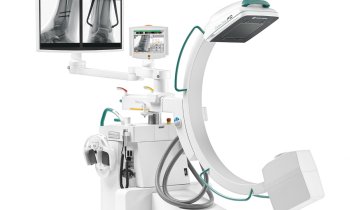Burnout
Trauma team members face risk of 'compassion fatigue'
Trauma team members are at risk of compassion fatigue and burnout syndrome, as supported by the new research by Gina M. Berg, PhD, MBA, of University of Kansas School of Medicine–Wichita and colleagues. They identify some "stress triggers" contributing to these risks, and make recommendations to help trauma teams cope with secondary traumatic stress.

The researchers performed a focus group study with twelve trauma team members at a Level I trauma center. Participants discussed their positive and negative experiences in helping patients suffering from traumatic injury: "compassion satisfaction" and "compassion fatigue," respectively.
Focus group participants also discussed burnout, factors contributing to stress on the trauma unit, and self-care and coping mechanisms. In addition, they completed surveys evaluating their stress levels and risk for compassion fatigue, burnout syndrome, and secondary traumatic stress.
Indirect Traumatic Stress Has Emotional Impact on Trauma Teams
Compassion fatigue is a condition of secondary stress seen in people who experience trauma indirectly. Previous research indicates that trauma team members suffering from compassion fatigue may be emotionally exhausted, depressed, and anxious. They may feel as if they have failed at their profession, and have lost their capacity to nurture.
Studies of compassion fatigue also mention burnout syndrome—defined as exhaustion, loss of interest, detachment, and low levels of personal effectiveness. Trauma, emergency, and critical care nurses are among the groups at high risk for both conditions.
The participants agreed that events of abuse were "stress triggers"—especially child or elder abuse, or any trauma involving a child. Other triggers included events where multiple family members were injured, injuries from avoidable situations, and "senseless" deaths. Interactions with family members and problems with the trauma team working together were additional contributing factors.
Even though all of the focus group participants reported low or mild stress levels, most scored in the moderate to high range for secondary trauma stress. One-third of participants had a combination of low compassion satisfaction and high burnout, while another one-fourth had moderate levels of burnout. Three-fourths of trauma team members had moderate to high levels of secondary trauma stress.
"Participants did not feel they experienced compassion fatigue often, and when they did, coping strategies appeared to differ between respondents," Dr. Berg and colleagues write. Although the trauma team members reported no training in managing secondary stress, they felt able to deal with it. They used a wide range of group and independent coping strategies, such as talking to other team members or making time for themselves. They also reported positive aspects of being part of the trauma team including team cohesiveness and pride, educating others, making a difference, and saving lives.
While trauma team members said compassion fatigue was an infrequent experience, their assessments indicate presence of compassion fatigue and burnout. "This suggests trauma team members may not be as adept at managing work stressors as well as they perceive," the researchers write.
Dr. Berg and coauthors recommend some approaches for supporting coping on trauma teams—starting by acknowledging that compassion fatigue not only exists, but is an expected reality of working on the trauma unit. Dr. Berg and colleagues conclude, "The use of these strategies can contribute to a developing a culture in which compassion fatigue and burnout are accepted realities for trauma care workers and allow staff to participate in support without fear of collegial judgment."
Source: Wolters Kluwer and The Society of Trauma Nurses
15.02.2016








